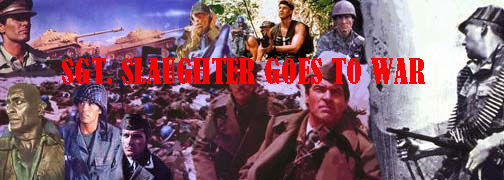
IS PARIS BURNING? (1966)
DIRECTOR: Rene Clement
CAST
FRENCH
Jean-Paul Belmondo, Charles Boyer, Leslie Caron, Jean-Pierre Cassel, Bruno Cremer, Claude Dauphin, Alain Delon, Pierre Dux, Daniel Gelin, Georges Geret, Harry Meyen, Yves Montand, Michel Piccoli, Claude Rich, Simone Signoret, Jean-Louis Trintignant, Marie Versini, Albert Remy, Pierre Vaneck, Jean Valmont, Michael Lonsdale.
GERMANS
Gert Frobe, Hannes Messemer, Wolfgang Preiss, Billy Frick, Joachim Hansen, Gunter Meisner, Helmuth Schneider, Otto Stern, Karl-Otto Alberty.
AMERICANS
Orson Welles, Anthony Perkins, Skip Ward, Glenn Ford, Robert Stack, Kirk Douglas, George Chakiris and E.G. Marshall.
Director Rene Clement brings together the finest French, American and German actors of the 1960s for a rather muddled historical epic. Released in 1966, “Is Paris Burning?” is a rather mixed bag of historical drama and confusion.
In August, 1944, the Allies are closing in on Paris. Hitler (Billy Frick) orders General von Cholitz (Gert Frobe, “The Longest Day”) to take command and burn the city to the ground to prevent its capture. French resistance forces within the city won’t permit this to happen, and Swedish consul Nordling (Orson Welles, “The Battle of Austerlitz”) convinces Choltitz to make multiple concessions, allowing the resistance to make significant gains and hold on until the armed forces arrive.
The all-star cast is uniformly good, although many of the American stars have little to do. Gert Frobe is the real star of the piece. As Cholitz, he makes a strong and sympathetic character. Cholitz has to make important, difficult decisions – on one hand, he’s concerned about his men’s safety; on the other, he is trying to follow orders. Welles is somewhat engaging, but he disappears partway through the film without leaving a lasting impression. The script, by Francis Ford Coppola and Gore Vidal, combines several stories, allowing the host of characters little time to do much of anything. Gallois (Pierre Vaneck) and Dr. Monod (Charles Boyer) try to break out of Paris and reach the Allies; Colonel Rol (Bruno Cremer) and Chaban (Alain Delon) organize the resistance forces; Nordling and tries to free Francoise Labe’s (Leslie Caron, “Father Goose”) husband from a POW camp. It’s hard for any of these subplots to make much on an impact, but like “The Longest Day” and “Battle of Britain”, the characters are kept distinct enough that they are easy to follow, despite major time lapses between appearances.
The German characters are portrayed by a host of familiar character-actors. Helmuth Schneider (“The Dirty Heroes”) plays a Sergeant who throws a pessimistic Corporal (Otto Stern, “Commandos”) into a detention cell; Gunter Meisner (“The Bridge at Remagen”) is his usual, evil self as an SS Officer in charge of a prison train; Joachim Hansen (“The Eagle has Landed”) is a moral officer who tries to help Nordling gain concessions; Wolfgang Preiss (“Von Ryan’s Express”) has little to do as the commander of a demolition squad; and Karl-Otto Alberty (“Battle of the Bulge”) is an SS officer. The American actors tend to have clunky cameos: Kirk Douglas (“In Harm’s Way”); Glenn Ford (“Casablanca Express”); Robert Stack and E.G. Marshall are all limited to one or two scenes. Anthony Perkins (“Catch-22”) and Skip Ward make more of an impression as infantrymen waiting to liberate Paris.
Clement handles every shot brilliantly. There are several standout scenes. One sequence has partisans ambush a German armored car. One soldier escapes, still smoldering from burns from an exploded Molotov cocktail. He proceeds to hijack a passing French car and make the driver take him to HQ, where his gruesome burns alert the neat-and-clean officers that something is not right in the city. The scene in which Francoise Labe searches for her husband amongst a throng of prisoners in especially moving, and the conclusion is brilliant and unexpected. In another scene, a French squad occupied an old woman’s apartment to fire on a German barricade, as the old woman watches while preparing herself a cup of tea. In another scene SS officers arrive to secure a painting for Hitler’s birthday from the Louvre, before Frobe burns down the city. Frobe informs them that the Louvre is in French hands, and they reply “But it’s right across the street!” Without missing a beat, Frobe tells them to take a white flag over and see if the French will let them in. This grim humor and wit add to the human story within the big picture.
A lot of attention to historical accuracy and detail went into the film’s production. Costumes, from French civilian dress to military uniforms are all accurate. The exteriors are beautifully shot in and around Paris, often with excellently staged wide shots showing off the narrow streets and just how vast and battleground was. The scenes of the French resistance gathering in the streets to march on the Police Station, set to Maurice Jarre’s thundering, jovial score, are most memorable. The spirit of revolution and joy of liberation is so well-portrayed that you can feel it with the characters on screen.
“Is Paris Burning?” suffers from annoyingly bad dubbing, overlength and a lack of focus, but these are nicks in any epic film, and cannot be avoided in order to tell such a vast story. As its heart, “Is Paris Burning?” is a fine movie about human freedom, told with brilliance and gusto.
SGT. SLAUGHTER'S RATING: 4 Bullets